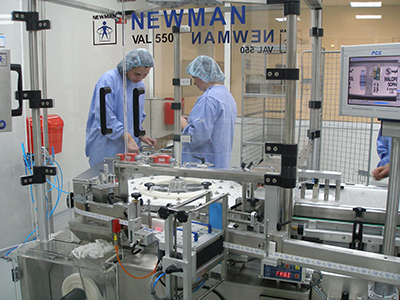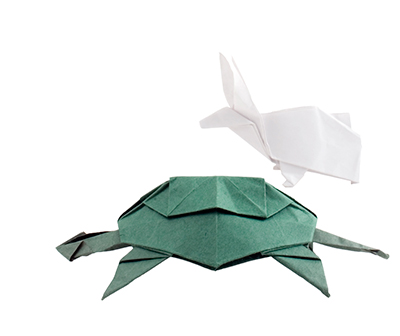On the road, speed may be judged by miles per hour; but, on a pharmaceutical packaging line, it’s all about containers per minute (CPM); that’s the number of containers processed every minute the line is in operation.
When it comes to the specific part of the process when labels are applied to the container, CPM is increasing in other sectors — most notably the food and beverage markets — in a bid to get product to market faster, in larger batches and more cost-effectively than ever before.
Where the food and drink sector goes, the pharmaceutical market tends to follow. But not in this instance. So why hasn’t the pharmaceutical industry embraced the need for speed?
Newman Labelling Systems has been in the business of producing automatic self-adhesive labelling systems for the pharmaceutical market for 70 years. And whilst we have certainly seen a number of changes in that time, one thing that has remained relatively constant is the speed of labelling.
Certainly, in the past decade or so, there has been no significant change in CPM, which at first inspection seems at odds with industry trends in general. The maximum speed for labelling a free-standing stable container remains at 300 cpm.
There are some key physical aspects that impact the speed of labelling, which it’s worth looking at first, including the container to be labelled and the label itself.
Container type
There are a variety of containers used in the pharmaceutical sector, from glass vials to plastic bottles and card cartons, all of which come in different sizes with different capacities. The nature of the container has a direct impact on the speed of labelling; the larger the container the slower the speed. It is considerably faster to label a batch of 2 mL glass ampoules, for example, compared with 500 mL plastic bottles.
What might be less obvious is that the quality of the container also has an impact on speed of labelling. We have seen first-hand the effect of poorer quality materials used in containers and poorer quality container manufacturing processes. Not only is there a risk of potential breakage or damage to a poor quality container, but the lack of uniformity can also be problematic as it can result in label skew.
We saw this recently with a glass bottle container: the mould and the overall container manufacturing process were substandard, which directly affected the label application. It may seem tempting to reduce costs by using cheaper containers, but you may well run into difficulties at the production stage.
Another relatively new aspect, which may have an impact on speed (and certainly has an impact on cost) is an increasing demand for preventing glass-to-glass container contact, or glass-to-metal, during the packaging process, particularly with glass vials, syringes and ampoules. It reduces the stress on the container, so there is less breakage, which is important for health and safety considerations and also for profitability (as some of the container contents are extremely valuable).
This is difficult to achieve — although not impossible — and any additional requirement placed on a packaging line is bound to impact the speed of that line.

Employees at Newman Labelling Systems
Label type
The nature of the label most certainly has an impact on application speeds, very much in synch with those of containers (size and quality). The longer, larger labels — typically used on larger containers — are slower to apply.
The quality of the label and label supplier is also important. Most self-adhesive labels are die cut after printing. If the die cutting unit penetrates the label liner, it can lead to those liners breaking on the labelling machine. It is important to use a quality, experienced label supplier who understands the demands placed on the labels within the pharmaceutical market; thankfully there are plenty of excellent label suppliers out there!
One area that has helped to speed up the labelling process has been the move during the past 20 years away from paper backed self-adhesive labels to polypropylene and PET liners. These are far stronger when placed under tension, so are better for labelling at higher speeds than paper lined labels.
Getting to the bottom of the issue
The vast majority of customers we work with use good quality containers and labels, but they still aren’t increasing machine speeds. So, what’s really going on here? In truth, there are a number of key reasons why CPM hasn’t increased to any great degree in this market, but they may not be what you are expecting.
Regulatory demands
The food and drinks markets are highly regulated, but nothing when compared with the pharmaceutical sector (as to be expected). Unlike the food and drinks sector, the pharmaceutical industry requires highly detailed documentation and validation, which directly impacts the speed at which a packaging line can run.
In theory, an inline Newman labelling machine could run at 600 CPM, but the third-party equipment essential to meet regulatory requirements, most notably validation, cannot match these speeds and perform their task effectively.
In the European Union, the introduction of the Falsified Medicine’s Directive will undoubtedly repress packaging speeds because of coding requirements and the high-quality printing and labelling required. Under the new Directive, every individual pack of medicine must be marked with a unique, non-predictive serial number with information that can be read by people and machines; previously, only data pertaining to the batch was required, but the onus has now changed to each and every individual container.
The unique identifier must be placed in a 2D barcode and contain the product code, a serial number, the national reimbursement number (if requested by Member States), the batch number and the expiry date. Each serial number must be registered with a pan-European database.
To achieve this, thermal transfer or inkjet printing technology is necessary, but these simply cannot operate fast enough to match the potential high speeds that a label applicator can accommodate. Vision systems are also a restricting factor, although more recent models do operate well at higher speeds. The reality is that these aspects of a labelling system — essential for regulatory compliance — have to run at a lower speed to provide the quality service they have been designed for. Very few such systems could run at 400 CPM or more and meet the quality required.
Batch sizes
In the food and drinks market, batch sizes are often huge, and packaging lines are operated around the clock, so the speed of labelling these items is important. Batch sizes have always been smaller in the pharmaceutical sector and, in recent years, have actually reduced. Whereas a batch would often take a day or more to label, the norm is now half a day. As the CPM speed hasn’t increased, it’s a clear indication that batch sizes have reduced.
This has changed the emphasis away from the speed of applying the label to the speed of changeover. Changing from labelling one container type to another often requires considerable downtime for preparation. Lower quality labelling systems will normally require an operator to change the machine settings manually, which not only takes time but also leaves it open to human error. This can be avoided, and the changeover time reduced, by opting for a labelling system that automates this process.
Newman Labelling systems, for example, incorporates inline machine settings that enable the operator to auto-synch all the machines features/functions from one container type and CPM to another at the press of a button.
Exception to the rule
The reality is that speed of labelling in the pharmaceutical sector isn’t a key priority for most — line efficiency is. But, as always, there are exceptions to the rule. These exceptions tend to be with lower value items such as dental anaesthetic cartridges, containers of insulin, generic products and product destined for the veterinary market. Because of the low unit cost, there is a need to get these to market faster.
Although the majority of systems in use in pharmaceutical packaging are inline machines that operate below 300 CPM, to achieve higher speeds, a different type of machine is required that is able to hold the container, rather than relying on the containers to hold each other in place. This generally involves a machine that operates with a starwheel or the less popular rotary carousel.
Newman’s VAL550, for example, is a starwheel-based system that has been specifically designed for high speed labelling (up to 600 CPM). It uses a vibrating diamond shape to move containers forward gently into a starwheel via a simple gating blade to feed product. Such a design prevents the container from moving at the point of label application.
As you might expect, higher speed machines tend to come at a premium, as they benefit from a more sophisticated mechanical design and are manufactured to a higher quality overall. But this really is an exception to the rule. The pharmaceutical industry isn’t driven by speed and, with the growth of the biotech industry, we are seeing higher value products produced in lower batches wherein line efficiency is the number one consideration, not speed.

Tortoise and the hare
In fact, in some cases, we have seen customers actually reduce speed with the successful outcome of increasing yield and overall output, as there is less damage to containers. So, it seems we have a case of the tortoise and the hare … with the slower tortoise winning the race!




